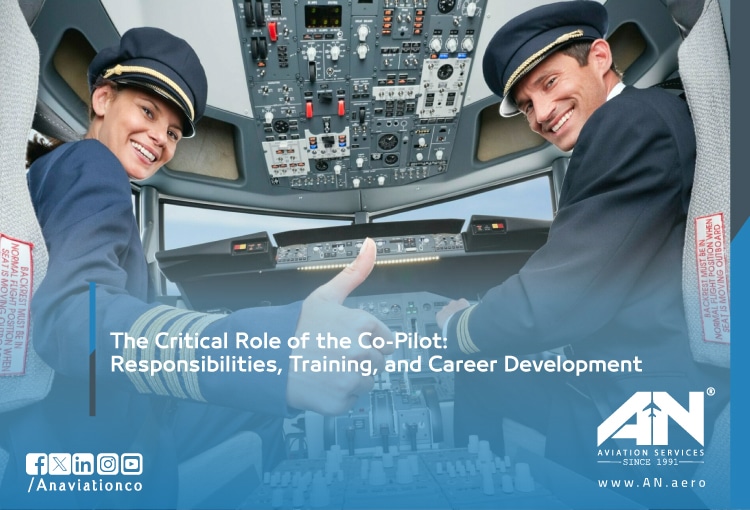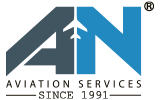
When you think about flying a plane, you probably imagine one person sitting behind the controls. But the truth is: it takes a team. Right next to the pilot in command sits the co-pilot, a vital member of the flight crew who helps make every flight safe, smooth, and successful.
The co-pilot shares responsibilities, solves problems fast, and always ready to take over if needed. Whether you’re talking about a private pilot flying a small aircraft or a full airline flight deck crossing the Atlantic, the co-pilot plays a massive part in getting everyone where they need to go.
Let’s walk through why the co-pilot’s job matters so much and how you can step into those shoes if flying is your dream.
Why Co-Pilots Are Essential for Flight Safety?
No matter how skilled a pilot is, no one can spot every single issue alone. Flying an airplane means juggling a lot: monitoring systems, handling communications, reading weather updates, watching fuel levels, all while keeping control of a giant machine speeding through the sky.
That’s where the co-pilot comes in. They double-check every move, catch mistakes before they turn serious, and make sure the captain isn’t overwhelmed. It’s like having a second driver on a long road trip, one who can take the wheel if you need a break or help you watch the road when conditions get rough.
This teamwork isn’t just smart, it’s life-saving. Every second counts when you’re in the air, and having two trained pilots makes the difference between safe landings and serious problems.
Core Responsibilities of a Co-Pilot
Let’s explore the multifaceted role of a co-pilot. We’ll discover their crucial contributions to flight safety and the ways they support the entire flight crew. Additionally, we can trace the journey of a co-pilot, from their initial training and required licenses to the progressive steps of their career, ultimately examining the path towards becoming a captain and the challenges encountered along the way.
1- Pre-Flight Duties:
A co-pilot’s work starts way before the wheels leave the ground.
They’re not just standing around while the captain plans the flight. They’re right there checking equipment, studying flight routes, and making sure the aircraft is 100% ready. This teamwork keeps everyone on the same page from the start.
2- Flight Plan Review & Weather Briefings:
Before takeoff, the co-pilot carefully goes over the flight plan. They check the route, altitudes, and timing. Then they review weather briefings for the whole trip.
Why? Because the weather changes fast. Knowing where storms, strong winds, or icy conditions could pop up lets the team plan safer paths or change speeds early, not after things get rough.
3- Aircraft Systems Checks & Documentation:
The co-pilot also helps check the plane’s systems. Think of it like checking your car before a road trip, only way more detailed. They look at engines, navigation systems, hydraulic lines, radios, and backup systems. Every checklist item they complete is another layer of protection.
They also make sure all documentation, like fuel records and maintenance reports, is in order. No guessing, no surprises.
In-Flight Operations
Once you’re airborne, the work doesn’t slow down. It shifts into a new gear. You and the captain have to stay sharp the whole time. You’ll monitor all the flight instruments, make sure the aircraft stays on course, and handle radio calls with air traffic control. If anything changes like weather updates, turbulence, or route adjustments, you’ll help make quick, smart decisions.
1. Monitoring Instruments & Communicating with ATC:
While the pilot flying focuses on handling the aircraft, the co-pilot watches instruments for signs of trouble and handles most of the communications with Air Traffic Control (ATC).
If there’s a sudden change, like another plane getting too close or a new storm rolling in, the co-pilot catches it quickly. They update ATC, help with rerouting, and keep the captain informed, minute by minute.
2. Emergency Procedures & Backup Decision-Making:
If something goes wrong in aviation, sometimes the co-pilot steps up immediately.
They run through emergency checklists, communicate issues to ATC, manage systems like engines or fuel if needed, and even take over flying if the captain’s busy solving another problem. Fast decisions save lives, and two skilled pilots give the flight deck a huge advantage.
Post-Flight Responsibilities
The flight might feel over when the wheels touch the runway, but the job isn’t done yet.
Debriefing & Logbook Entries:
After landing, the co-pilot joins the captain to talk through the flight: what worked well, what could be smoother next time, and anything they need to pass along to maintenance crews or future pilots.
They also update logbooks, recording flight time, flight routes, and any lessons learned. These records matter, they help track career progress and spot patterns that could improve safety across the board.
Reporting Technical Issues:
If the aircraft had any technical hiccups, even tiny ones, the co-pilot reports them. You don’t want to fly again without fixing hidden problems. Speaking up protects the next flight and every flight after that.
Qualifications & Training Requirements
If being a co-pilot sounds exciting to you, here’s what you’ll need to get started.
1- Certification Pathways:
First, you’ll need a Commercial Pilot License (CPL). After that, many pilots work their way up to an Airline Transport Pilot (ATP) certificate, which is often required for bigger airlines.
You’ll also need a type rating: extra training that qualifies you to fly specific aircraft models. Flying a Boeing 737 and a Gulfstream private jet aren’t the same, so pilots need different certifications.
2- Skill Development:
Pilot training never really ends. Good pilots keep practicing even after they get their first pilot certificate.
- Simulator Training for Emergency Scenarios: You’ll spend lots of hours in high-tech simulators that throw emergencies at you: engine fires, bad landings, system failures. Handling them in a simulator means you’ll be ready when it counts in real life.
- CRM (Crew Resource Management) Certification: You’ll also earn a CRM certificate. CRM means knowing how to work perfectly with your captain and your flight crew, using every resource around you, people, equipment, and knowledge to make smart decisions fast.
Co-Pilot vs. First Officer: Understanding the Differences
Let’s clear up a common mix-up, is a co-pilot the same thing as a first officer? And the short answer is yes.
- Terminology Across Aviation Sectors: Different parts of aviation use different words. Airlines usually say “first officer,” while small charter companies or private pilots might say “co-pilot.” But either way, it’s the same idea: second in command and ready to step up when needed.
- Airline Hierarchy Structures: In most airlines, you have a clear chain: captain on top, first officer next. Both are fully qualified pilots. In some cases, even the newer military pilots and flight engineers step into similar support roles.
- Charter & Private Aviation Variations: On smaller private flights, things can be a bit looser. You might fly as a private co-pilot earlier, getting more hands-on flight experience faster.
Career Progression
Becoming a co-pilot is just the start if you want to keep climbing.
- Hours Required for Captain Upgrade: To move from co-pilot to captain, you’ll need to build up flight hours — usually at least 1,500 or more. Every airline has its own number, but the goal is the same: prove you’ve seen enough situations to handle anything that comes at you.
- Specialization Opportunities: Later, you can specialize. Some pilots love long-haul trips across oceans. Others prefer short-haul routes or even luxury VIP private flying. Different types of pilot jobs suit different personalities and lifestyles.
- Challenges Faced by Co-Pilots: Schedules change. Weather shifts. Airports get busy. A good co-pilot stays flexible and stays cool even when plans flip upside down.
- Managing Fatigue on Long-Duty Days: Flying long hours isn’t just tiring; it can slow your thinking. Great co-pilots learn how to manage rest, stay sharp, and keep mental focus high even after a 10-hour shift.
- Balancing Authority with Captain’s Decisions: A good co-pilot speaks up when needed but knows how to support the captain’s final decisions too. It’s all about keeping respect and communication strong.
Psychological Factors
Flying tests your body and your mind. Many young pilots, even with pilot licenses and tons of flight training, feel like they don’t belong at first. That’s normal. Every flight, every smooth landing, every good decision builds real confidence. You earn your seat in that cockpit.
When things get rough, training kicks in. Good co-pilots don’t freeze or guess; they run checklists, trust teamwork, and fix problems fast. Staying calm under pressure is one of the most powerful skills any pilot can have.
Stay Focused and Keep Flying
Being a co-pilot isn’t just a stepping stone, it’s a huge responsibility and an amazing achievement. You’re a key part of the flight crew, helping keep every trip safe, smooth, and successful. Whether you’re just starting flight training or already logging flight hours, every step you take brings you closer to mastering the skies.
Stay focused, keep building your skills, and trust that with time and experience, you’ll be ready for whatever the flight deck throws your way.

